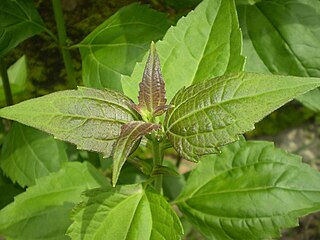
Mona Island is the third-largest island of the Puerto Rican archipelago, after the main island of Puerto Rico and Vieques. It is the largest of three islands in the Mona Passage, the strait between Hispaniola and Puerto Rico, with the others being Monito Island and Desecheo Island. It measures about 7 miles by 4 miles, and lies 41 mi (66 km) west of Puerto Rico, of which it is administratively a part. It is one of two islands that make up the Isla de Mona e Islote Monito barrio in the municipality of Mayagüez.

Desecheo is a small uninhabited island of the archipelago of Puerto Rico in the northeast of the Mona Passage; 13 mi (21 km) from the municipality of Rincón on the west coast of the main island of Puerto Rico and 31 mi (50 km) northeast of Mona Island. It has a land area of 0.589 sq mi. Politically, the island is administered by the U.S. Department of the Interior, U.S. Fish and Wildlife Service as the Desecheo National Wildlife Refuge, but part of the Sabanetas barrio of Mayagüez.

Chromolaena odorata is a tropical and subtropical species of flowering shrub in the family Asteraceae. It is native to the Americas, from Florida and Texas in the United States south through Mexico and the Caribbean to South America. It has been introduced to tropical Asia, West Africa, and parts of Australia.

Chromolaena is a genus of about 165 species of perennials and shrubs in the family Asteraceae. The name is derived from the Greek words χρῶμα (khrôma), meaning "color", and χλαῑνα (khlaīna) or λαῑνα (laīna) meaning "cloak". It refers to the colored phyllaries of some species. Members of the genus are native to the Americas, from the southern United States to South America. One species, Chromolaena odorata, has been introduced to many parts of the world where it is considered a weed.

Tamaulipa is a genus of flowering plants in the tribe Eupatorieae within the family Asteraceae. It is monotypic, being represented by the single species Tamaulipa azurea, commonly known as blue boneset. The generic name refers to the State of Tamaulipas in northeastern Mexico, and to the Tamaulipan mezquital scrubland, which covers much of the state. The species also occurs in the extreme southern part of Texas in the United States. It is a climbing shrub or non-twining vine that grows to about 2 to 3 m and has bluish or blue lavender flowers.

Oplonia spinosa, the pricklybush, is a species of plant in the family Acanthaceae, endemic to several Caribbean islands. It is a spiny shrub ranging in height from dwarf to 3 meters, with curved spines 4–12 mm long, and leaves variable in size and shape.

Chromolaena ivifolia called ivy-leaf false thoroughwort, or ivyleaf thoroughwort, is a species of flowering shrub in the family Asteraceae. It is native to North America and South America, from the south-eastern United States to Argentina.
Chromolaena frustrata called Cape Sable false thoroughwort, or Cape Sable thoroughwort, is a rare North American species of flowering shrub in the family Asteraceae. It is found only in southern Florida, on the Florida Keys, inside Everglades National Park, and other nearby low-lying areas. It grows on coastal rock outcrops, the edges of hammocks, and other undisturbed sites at elevations less than 10 meters above sea level.
Chromolaena bigelovii called Bigelow's false thoroughwort, or Bigelow's thoroughwort, is a North American species of flowering shrub in the family Asteraceae. It is native to northeastern Mexico and the US State of Texas.
Chromolaena borinquensis, the limestone thoroughwort, is a West Indian species of flowering shrub in the family Asteraceae. It is native to the Commonwealth of Puerto Rico, part of the United States.
Chromolaena geraniifolia, the geraniumleaf thoroughwort, is a West Indian species of flowering shrub in the family Asteraceae. It is native to the Commonwealth of Puerto Rico, part of the United States.

Chromolaena hirsuta is a South American species of flowering shrub in the family Asteraceae. It is native to Brazil, Bolivia, Uruguay, and Argentina.
Chromolaena impetiolaris is a rare Caribbean species of flowering shrub in the family Asteraceae. It is found only the Island of Dominica in the Lesser Antilles.
Chromolaena macrodon is a rare Caribbean species of flowering shrub in the family Asteraceae. It is found only the Island of Dominica in the Lesser Antilles.
Chromolaena trigonocarpa is a rare Caribbean species of flowering shrub in the family Asteraceae. It is found only the Island of Dominica in the Lesser Antilles.

Chromolaena sinuata, the wavyleaf thoroughwort, is a Caribbean species of flowering shrub in the family Asteraceae. It is found on the Islands of Cuba, Hispaniola, Puerto Rico, Guadeloupe, Martinique, La Desirade, Montserrat, St. Eustatius, and Antigua.
Chromolaena misella is a Mexican species of flowering shrub in the family Asteraceae. It is native to the State of Jalisco in western Mexico.

Chromolaena sagittata is a Mexican species of flowering shrub in the family Asteraceae. It is found in western Mexico, in the states of Sonora, Sinaloa, Nayarit, and Baja California Sur.
Koanophyllon droserolepis, the Monte Torrecilla thoroughwort, is a species of flowering plant in the family Asteraceae. It is found only in Puerto Rico.









